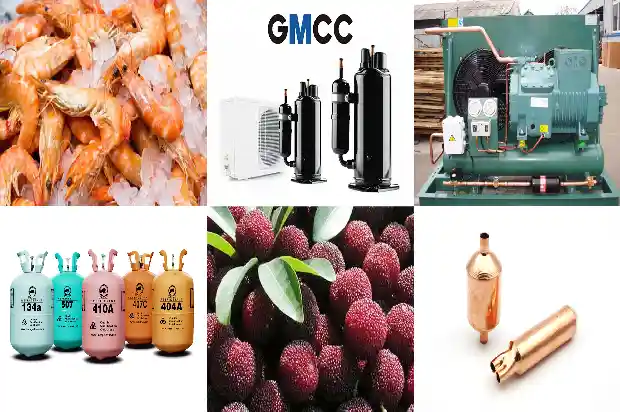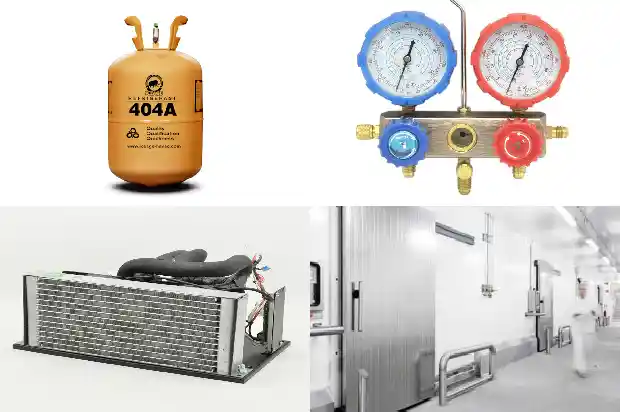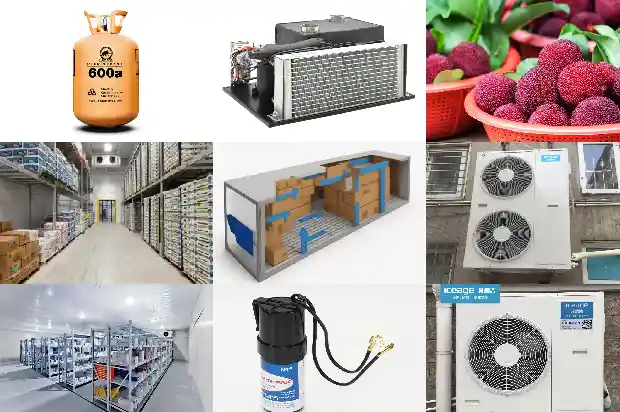What Are the Common Causes of High - pressure Faults in Chillers?
2025-02-25
Chiller units, also known as refrigerators, refrigeration units, ice - water units, cooling equipment, etc., are widely used in various industries, so the requirements for chiller units vary. In the refrigeration industry, they are divided into air - cooled chillers and water - cooled chillers. In terms of temperature control, chillers are divided into low - temperature chillers and normal - temperature chillers.
The high - pressure fault of a chiller refers to the situation where the exhaust pressure of the compressor is too high, causing the high - pressure protection relay to operate. The exhaust pressure of the compressor reflects the condensing pressure, and the normal value should be between 1.4 and 1.8 MPa. The protection value should not be set to exceed 2.0 MPa. Because long - term high pressure will lead to excessive operating current of the compressor and cause damage to the compressor.
Common causes of high - pressure faults:
- High cooling water temperature and poor condensing effect
Chiller units require a rated cooling water condition of 30 - 35 °C. High water temperature and poor heat dissipation will inevitably lead to high condensing pressure. This phenomenon often occurs in the high - temperature season.
The reasons for high water temperature may be problems with the cooling tower. For example, the fan is not running or even rotating in reverse, and the water distributor is not rotating.
This is manifested as a very high cooling water temperature that rises rapidly. When the outside air temperature is high, the water circuit is short, and the amount of circulating water is small. In this case, the cooling water temperature generally remains at a relatively high level, and the solution can be to increase the water storage tank.
- Insufficient cooling water flow, failing to reach the rated water flow
The main manifestation is that the pressure difference between the inlet and outlet water of the unit becomes smaller (compared with the pressure difference at the beginning of system operation), and the temperature difference becomes larger.
The reasons for insufficient water flow are water shortage or air in the system. An exhaust valve can be installed at the high point of the pipeline for exhaust.
If the pipeline filter is blocked or the selected filter is too fine, its water - permeability is limited. A suitable filter should be selected and the filter screen should be cleaned regularly.
If the selected water pump is too small and not compatible with the system. - Scaling or blockage of the condenser
Condensed water generally uses tap water, and it is easy to scale when the temperature is above 30 °C. Moreover, since the cooling tower is open - type and directly exposed to the air, dust and foreign objects can easily enter the cooling water system, causing the condenser to be dirty and blocked, reducing the heat - exchange area, lowering the efficiency, and also affecting the water flow. The manifestation is that the pressure difference and temperature difference between the inlet and outlet water of the unit become larger. When touching the condenser, the temperature from top to bottom is very high, and the liquid - outlet copper pipe of the condenser is scalding. The unit should be back - flushed regularly, and if necessary, chemically cleaned to remove scale.
- Excessive refrigerant charge
This situation generally occurs after maintenance. It is manifested as high suction and exhaust pressures, high balance pressure, and high operating current of the compressor. Under rated conditions, air should be released according to the suction and exhaust pressures, balance pressure, and operating current until normal. - Non - condensable gases such as air and nitrogen mixed in the refrigerant
This situation generally occurs after maintenance when the evacuation is not thorough. The refrigerant can only be drained, and then re - evacuated and re - charged with refrigerant. - False alarms caused by electrical failures
Due to the high - pressure protection relay being damp, having poor contact, or being damaged, the unit's electronic board being damp or damaged, communication failures can cause false alarms. For this kind of false fault, the fault indicator light is often not on or is dimly lit. Manual reset of the high - pressure protection relay is ineffective. Measuring the operating current of the compressor is normal, and the suction and exhaust pressures are also normal. - Insufficient cooling water flow, failing to reach the rated water flow
The main manifestation is that the pressure difference between the inlet and outlet water of the unit becomes smaller (compared with the pressure difference at the beginning of system operation), and the temperature difference becomes larger.
Solutions: If the pipeline filter is blocked or the selected filter is too fine, its water - permeability is limited. A suitable filter should be selected and the filter screen should be cleaned regularly. Or if the selected water pump is too small and not compatible with the system. - Air in the refrigeration system
When the chiller is working, if the pressure gauge shakes, it indicates that there is air in the system.
Solutions: It is necessary to re - evacuate. If necessary, replace the dryer filter to completely remove the moisture in the refrigeration system. This situation generally occurs after maintenance when the evacuation is not thorough. After shutting down, air can be emptied at the highest point of the condenser or re - evacuate and add refrigerant.
Related Articles
- What Are the Common Causes of Cold Air Blower Noise?
- Air - conditioner Low - pressure Alarm? These Nine Common Causes
- What Are the Causes of Scroll Compressor Damage?
- Causes and Prevention of "Primary Condensation" and "Secondary Condensation" in Fan - Coil Units
- 10 Symptoms and Causes of Abnormal Frosting in Heat Pumps
- Common Causes and Analysis of High and Low Pressure Alarms
- Common Causes and Analysis of Compressor Thermal Protection
- 4 Points on Causes of Water Leakage in Closed Cooling Towers
- Analysis of Causes for Safety Valve Leakage
- What Causes Noise in Pressure Reducing Valves?
- Causes and Solutions for Elevated Pressure in Cold Storage
- Common Causes of Frost Build-up in refrigerant evaporators
- What Causes Poor Refrigeration Effect of Refrigerated Trucks?
- Common Causes of Air Conditioner Compressor Failures
- Winter Approaches: How to Solve the Low High - pressure Issue of Air - cooled Condensing Units?
- Common Pressure Valves and Protection Devices in Refrigeration Units
- How to Troubleshoot and Repair High - pressure Protection of Air - cooled Units?
- How to Read the High - and Low - Pressure Gauges of Refrigeration Air - conditioners?
